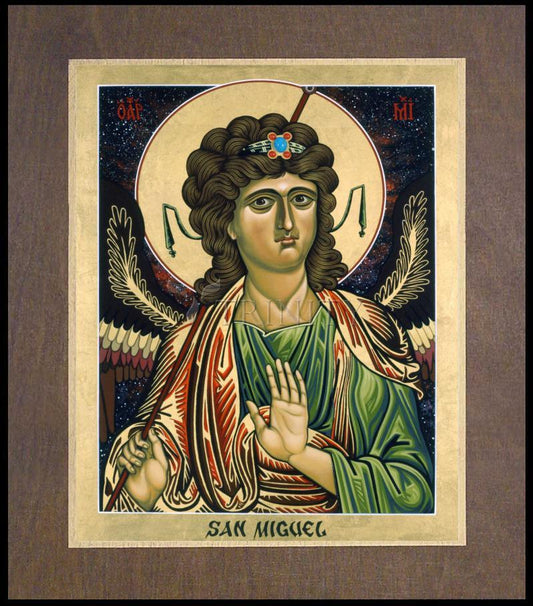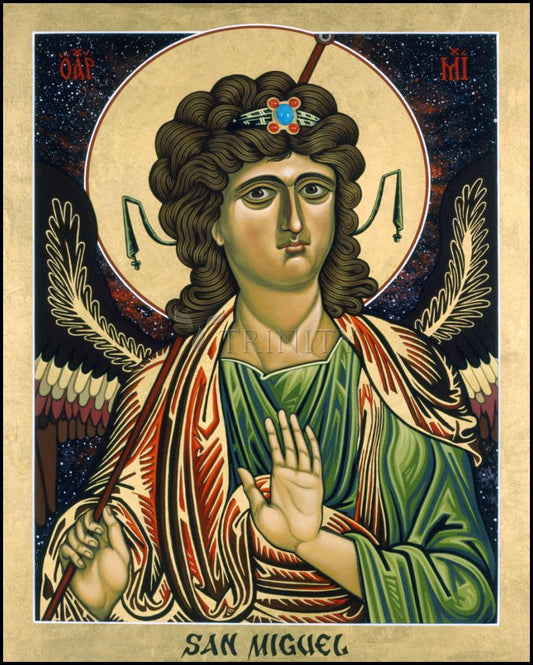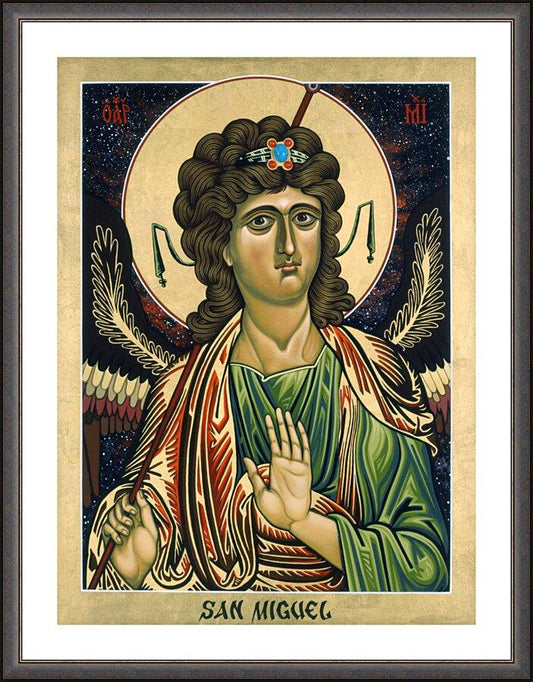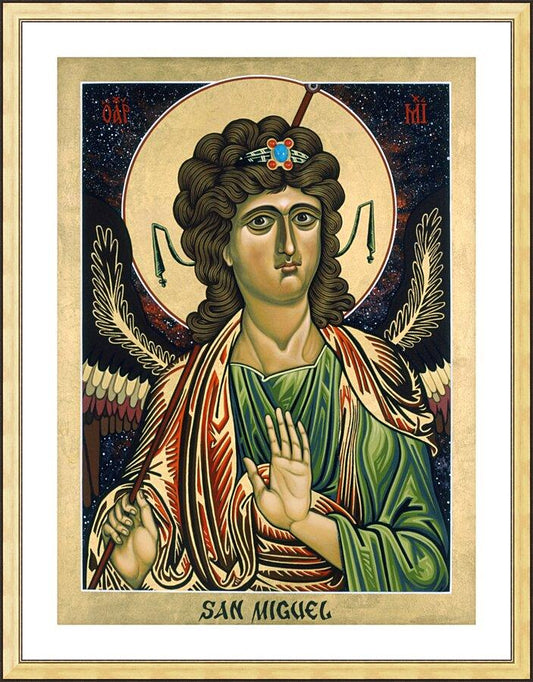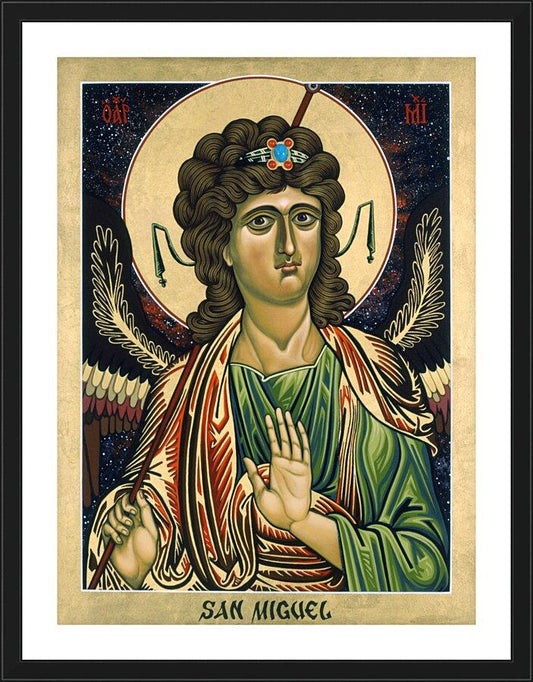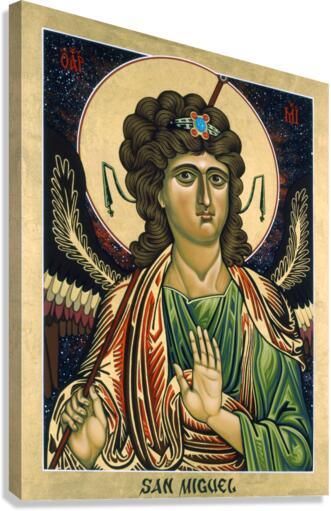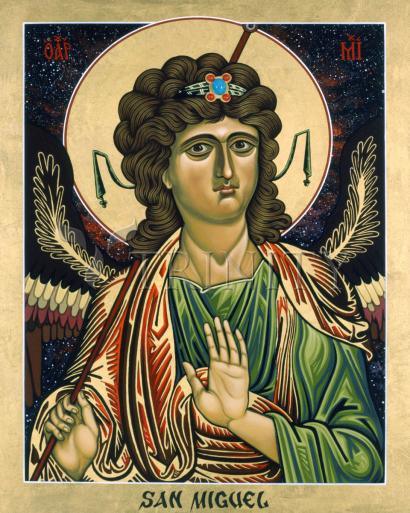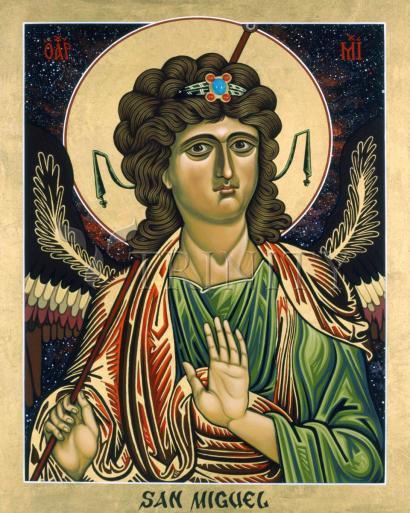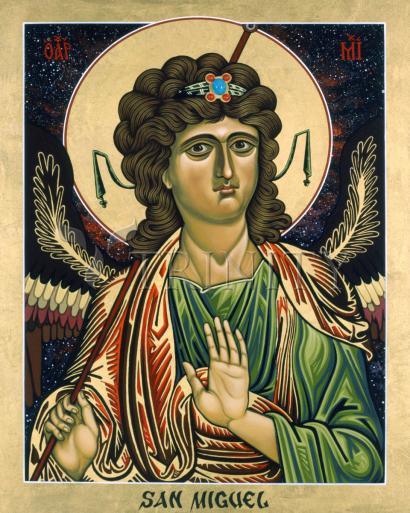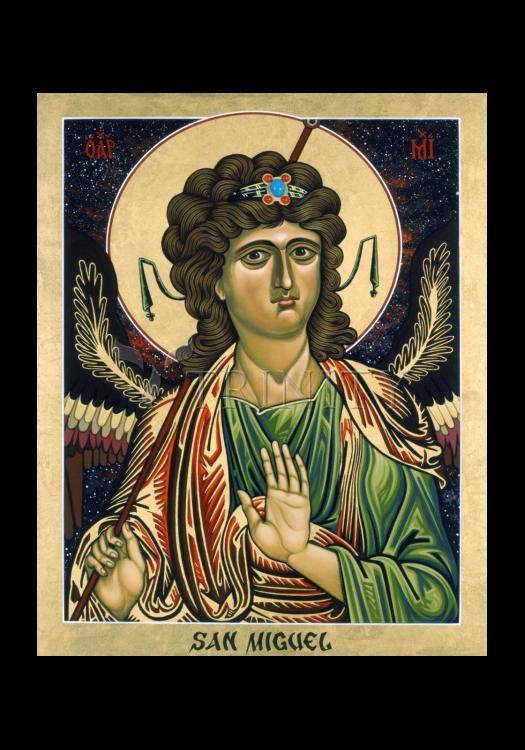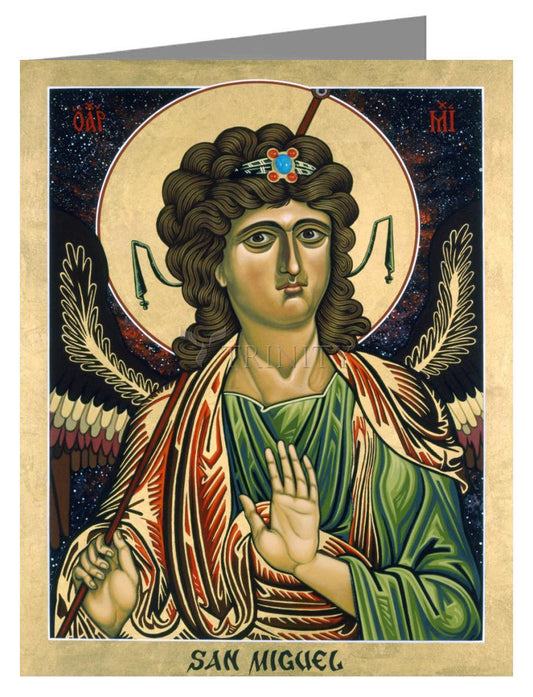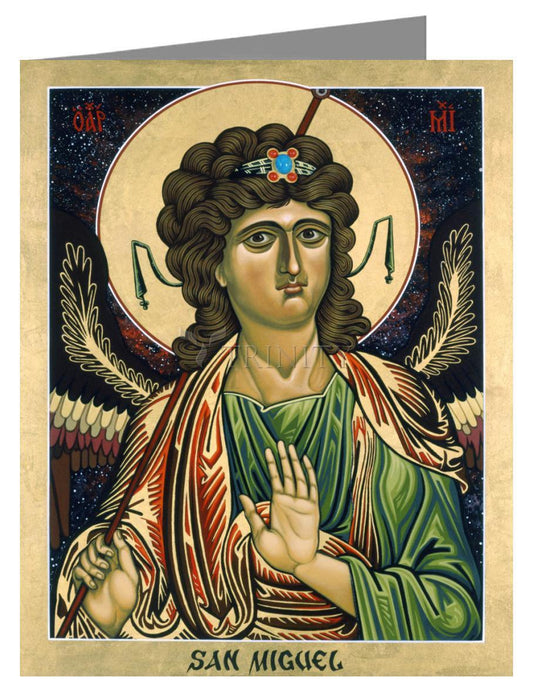St. Michael, who ranks among the seven archangels, is also one of the three angels mentioned by name in the Scriptures, the others being St. Raphael and St. Gabriel. St. Michael is spoken of twice in the Old Testament, and twice in the New. The first reference occurs in the Book of Daniel (chapter x), where Michael comes to comfort Daniel after he has had a vision, and promises to be his helper in all things. In Daniel xii, Michael is called "the great prince who standeth for the children of Thy people." In these references Michael is represented as Israel's great support during the seventy years of the Babylonian captivity. Daniel, wise and holy leader that he was, wanted his people to understand that God had not forgotten them, and that, even though enslaved, they had a royal champion. In the New Testament (Jude ix), we are told that Michael disputed with the devil over the body of Moses; this episode is not mentioned elsewhere in the Bible.
In the Apocalypse (chapter xii) we find the most dramatic reference to St. Michael. Here John recounts the great battle in Heaven, when the wicked angels under Lucifer revolt against God, and how Michael, leading the faithful angels, defeats the hosts of evil and drives them out. In this role he has been painted by many artists, and the poet Milton, in book vi of Paradise Lost, recounts the famous struggle. Because of this victory, St. Michael is revered in Catholic tradition and liturgy as the protector of the Church, as once he was regarded as the protector of the Israelites. In the Eastern Church, as well as among many theologians in the West, St Michael is placed over all the angels, as prince of the Seraphim. He is the special patron of sick people, mariners, and grocers; in Asia Minor many curative springs were dedicated to him. His cult has also been popular in Egypt, Rome, France, and Germany. His emblems are a banner, a sword, a dragon, and scales. The name Michael is a variation of Micah, meaning in Hebrew, "Who is like God?"



